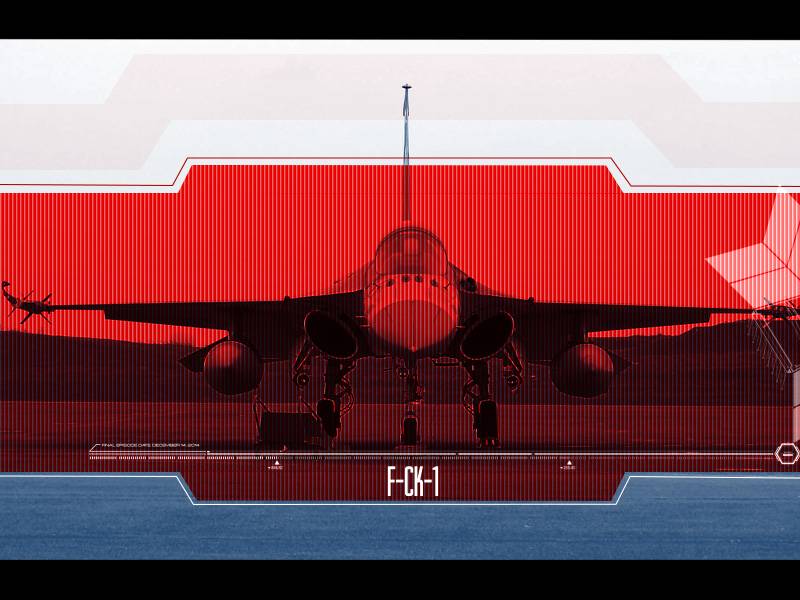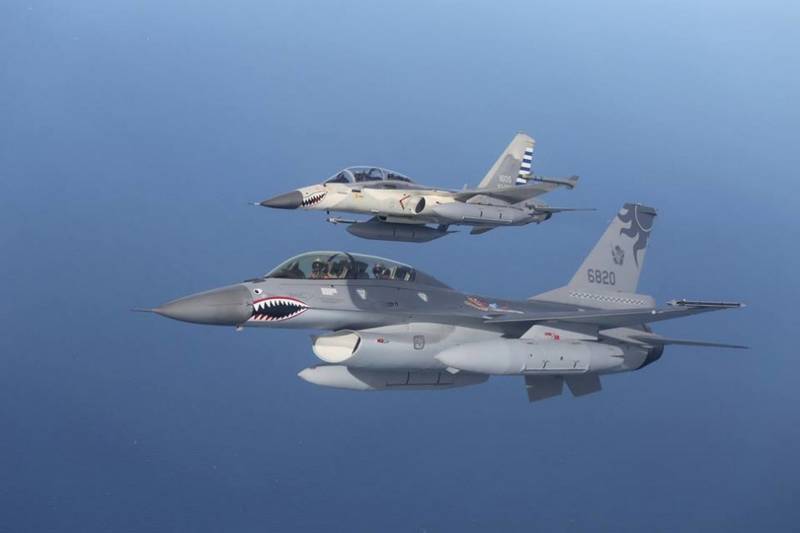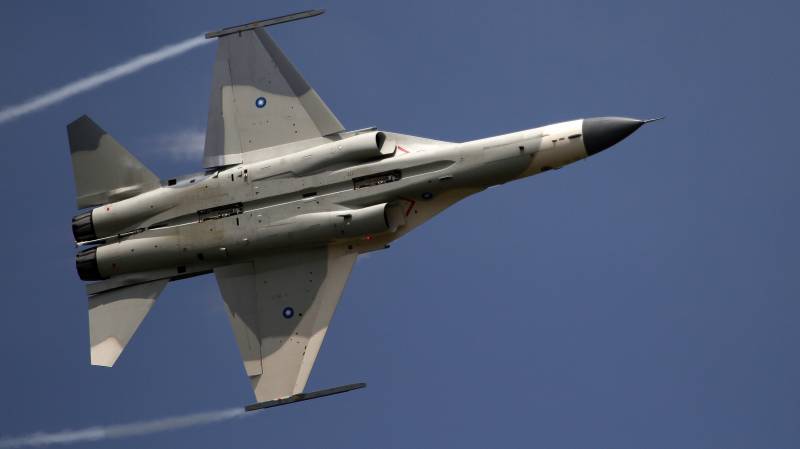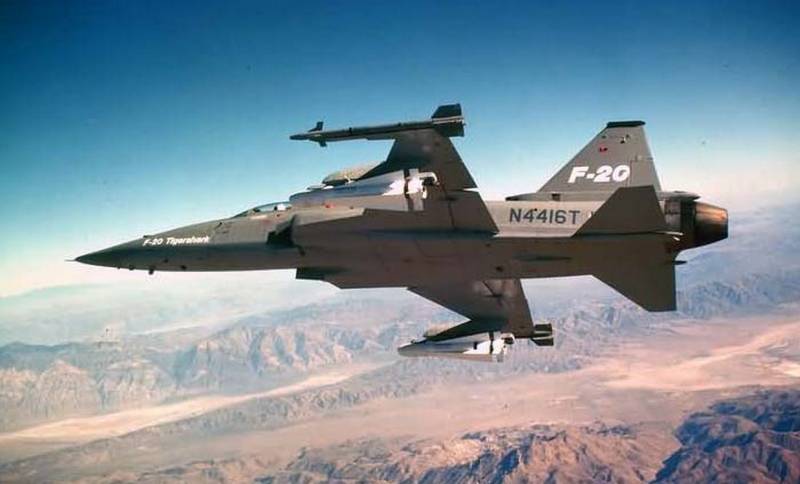Taiwan is ready for the “jump” in the 5 generation: the first stage is the national modernization program of the F-CK-1 fighter jets

The assessment of the combat potential of the armed forces of Taiwan (Republic of China) is one of the most interesting and important topics of any forecast review affecting the military-strategic situation in the Asia-Pacific region, because against the background of the increasingly hardening anti-China position of the new administration of Washington, an automatic “spurring” of all is happening without exception, the defense allies of the US allies in countering Beijing’s ambitions in the region. Taiwan, in turn, is in the “anti-Chinese axis” a link to the main threat to Beijing, both because of the extreme geographical proximity of the borders of the two conflicting states, and due to the appearance in Taipei of quite modern 3-flywheel anti-ship missiles “Yuzo”, which represent a great danger not only for the Chinese naval trade and combat surface ships, but also for the strategically important objects of the Celestial Empire on the coast of Fujian province.
It is known that the minimum distance from the western coast of Taiwan to the coast of the Chinese island of Pingtana (Fujian Province) is only 140 km, while the range of Yuzo missiles (depending on the trajectory) can reach 320 km. An early version of this family of rockets, the Hsiung Feng-III (150 km range), which is already in mass production, is also capable of hitting targets on the Chinese coast, it has a flight speed of 2700 km / h. Naturally, the PRC can use it to repel the strike of these anti-ship ZRDN C-300PS and C-400, but given that the Taiwan armed forces will put into service more than 1000 units. during a major conflict, a situation may arise that in order to eliminate all Yuzo launchers and simultaneously intercept Yuzo and HF-3 anti-ship missiles, Beijing will need to attract significant attack resources and missile defense resources only in the Taiwanese direction. At this point, other missile-dangerous sections of the borders of China may be exposed in front of the enemy. No less interesting is the design of the Xsyung Feng-3 / Yuzo family of missiles: they are very similar to our X-31AD and X-41 Mosquito, but they are distinguished by flat rectangular air intakes for direct-flow air-jet engines, which significantly reduces their radar signature, as well as large separable accelerators. It is obvious that initially the documentation with the drawings on the Chinese anti-ship missile system YJ-91 (analogue X-31А), “dug out” by the Taiwanese special services, was delivered to the walls of the Zhunshan National Institute of Science and Technology, and then the project, with the help of American experts, was modified in accordance with constructive features of the supersonic GQM-163A “Coyote” target missile, the latter also used rectangular air intakes.
Over the past decades, Taiwan, as well as China, has achieved tremendous success in the development of advanced avionics for missiles and military aviation. This was made possible thanks to the support of specialists from the American companies Raytheon and Lockheed Martin, who today participate in a deep modernization program for 144 Taiwanese F-16A / Bs to F-16V levels. The machines receive powerful radars with AFAR AN / APG-83 SABR and new airborne electronic warfare equipment. And so it's time to consider the even more ambitious project of the Zhunshan Institute, which could soon put the Taiwanese defense industry at the level of South Korean or Japanese.
We are talking about the development of a deeply refined version of the F-CK-1 Jingo lightweight twin-engined tactical fighter. In service is approximately 127 machines of this type, which are part of the 443 th wing of the Taiwan Air Force. They were developed as part of the IDF project (“Indigenous Defensive Fighter”), which owes its appearance to the American embargo on the supply of weapons to Taiwan. The embargo was imposed by Washington in the 80-s with the aim of reducing the degree of political tension with the People's Republic of China. Meanwhile, the embargo did not have any impact on the US-Taiwan military-technical cooperation, and the development of the fighter, led by the Taiwanese corporation Aerospace Industrial Development Corporation, followed the path of “crossing” the structures of the Figer X-fighter X-TUM, F-5C and F / A-16C. The program consisted of several separate stages, among which were projects to create a glider, a power plant, as well as avionics and weapon control systems.
The result was a light multipurpose fighter in the JAS-39 "Gripen" weight category (the empty mass of the machine is 6500 kg, the normal take-off weight is 9100 kg and the maximum take-off weight is 12250 kg), the glider has a high aerodynamic qualities due to the developed flows root of the wing. This makes it possible to maintain flight with large angles of attack, as well as to realize a more or less normal angular speed of turning after a set speed of 700 — 900 km / h, but this maneuverability is achieved only for a very short period of time, because the thrust ratio of F-CK-1 is extremely small for a steady turn in the plane of pitch with a high angular velocity. It’s all a matter of insufficient Honeycomb F2-125 turbojet 70's twin turbojet engines: at maximum they give out 5470 kgf, afterburner 8380 kgf, this realizes the thrust-weight of all 0,92 kgf / kg with normal take-off weight and 0,69 kgf, and 4 kgf / kg with normal take-off weight and 16 with the normal take-off weight and 18, with real weight of the 130 kgf / kg with normal take-off mass and 346, and 1275 kgf / kg with normal take-off weight and 1 kgs / kg with normal take-off weight and 1 kgs / kg with normal take-off weight and 18 kgs / kg with normal take-off weight and XNUMX kgs / kg with normal take-off weight and XNUMX kgNKX / xNXX with normal take-off weight and XNUMX kgN, XXXXXXXXXXXXXVXXXXVXXXXXT kg at maximum take-off weight. Such figures do not even correspond to XNUMX generation machines. In other words, there is an unacceptable contrast between the aerodynamic qualities of the airframe and the thrust-to-weight ratio, as well as acceleration characteristics. As a result, the Jingo maneuverability, to put it mildly, is “lame” in comparison even with such fighters as the F-XNUMXC or the F / A-XNUMXC / D “Hornet”, and corresponds to the level of the Yak-XNUMX and Aermacchi training aircraft M- XNUMX. The speed of the fighter also does not shine and is of the order of XNUMX km / h (less than that of the strategic bomber B-XNUMXB). You can compare the performance of the F-CK-XNUMX with the American carrier-based fighter F / A-XNUMXC "Hornet" in the video below.
However, due to official Taipei’s concerns about a possible military conflict with the PRC, the Taiwanese aerospace monopolist AIDC and the Zhunshan National Institute of Science and Technology are not going to stop there, and plan to replenish the Jingguo single-seat tactical fighter aircraft by 20. modifications of the F-CK-1A and the two-seater F-CK-1B radically upgraded prototype generation "4 ++". On Taiwan information resources, it is reported that the Zhongshan Institute of Science and Technology plans to develop a new fighter based on the existing Jingguo (Ching-Kuo) machines, as well as to improve the 127 machines already in service. It is also reported that the new generation fighter jets will be partially applied constructive and elemental base of the F-5A 35 generation fighters. Obviously, the gliders of the advanced F-CK-X will receive radio absorbing materials and coatings to reduce EPR; and in a perspective computerized fire control system they integrate an all-view optical-electronic sighting system with several sensors represented by high-resolution infrared matrices (like the OLS with the distributed aperture AN / AAQ-37 of the F-35A fighter). New Taiwanese fighters will be able to detect and distant tracking of warm-contrast air targets at ranges from 20-40 km (cruise missiles, RCC, PRLR) to 100 - 200 km (fighters and after-bomber bombers in the afterburner).
As part of the modernization, the existing F-CK-1A / B can also be equipped with optic-electronic sighting systems, but here they will definitely be limited to a single EOTS (Electro-Optical Targeting System) module or IRST (the first ones installed on the F-35A, the latter are based on Japanese F-15J), since the Taiwanese experts are unlikely to consider it necessary to “redraw” the entire Jingguo fore part (including coatings, wiring, etc.) to accommodate a complex DAS infrared aperture of the DAS type.
New fighters will receive a brand new radar with active phased array type AN / APG-83 SABR, and maybe more advanced. It is known that the F-CK-1A / B, which is in service with the Taiwan Air Force, is today equipped with airborne radar with a GD-53 slot antenna array. The station is a hybrid of AN / APG-66 and AN / APG-67 with the power of the radiator and the size of the aperture of the latter. The target detection range with the 3m2 EPR reaches 80 km, the large bomber type target is 150 km, and against the ground surface, these types of targets will be detected at a distance of 50 and 93 km, respectively. Moreover, the GD-53 radar has a similar high-performance processor and the element base for converting radar information, which allows for many operating modes, including: 2 of the air-to-sea mode (Sea-1 and Sea-2); subtypes of the air-to-ground mode, as well as several subtypes of the air-to-air mode. Moreover, the old aircraft radar of the Chingo fighters can be updated with the new airborne radar. The ease of refurbishment is explained by the use of modern digital backbone (bus) of the MIL-STD-1553B data on fighters.
The next task should be to increase maneuverability, thrust-carrying capacity and acceleration parameters of a promising fighter based on the F-CK-1A / B. For this, Taiwanese specialists will have an 2 way of selecting a new powerplant with an 1,5 - 2 -fold increased maximum and afterburner. The first way will be expedient if it is decided to maintain the weight and dimensions of the new machine within the limits of the early F-CK-1. Its essence lies in the fact that it is necessary to select TRDDF with a diameter corresponding to the diameter of the original Honeywell F125-70 type engine (F125-GA-100), which is 914 mm, and also 2,6 m long (these dimensions correspond to the fighter jet nacelles " Jingo "). The contenders are the next generation upgraded turbojet engines F125X and F125XX with the design afterburner 5710 and 7445 kgf. The power plant of the 2-x engines F125X will create a common 11420 kgf thrust, which will give the new fighter on the basis of the F-CK-1A / B thrust-to-weight ratio within 1,2 kgf / kg with a normal take-off weight. A more powerful pairing F-125XX with 14890 kgf can bring the thrust ratio to 1,45 kgf / kg with a normal take-off weight and 1,15 kgf / kg with a maximum. This principle can also be used to re-equip the F-CK-1 already in service, since it is unlikely that an increase in the internal dimensions of the nacelle will be required.
The second way looks much more logical. It provides for constructive changes in the draft airframe staffing "Jingguo". First of all, the wing span and area, the length of the fuselage, and the dimensions of the engine nacelles will be increased. Accordingly, the elevator area and stabilizer area will be increased; A two-tail vertical tail structure can also be implemented according to the type of construction F / A-18C / D / E / F. The wing area from 24 m2 will be increased to 37 - 42 m2, while the normal take-off weight will be kept at the level of 12 - 12,5 tons, which will reduce the wing load from 380 to 320 kg / m2: this will have a very positive impact on fuel efficiency. and at the speed of turning in melee air combat. As a power plant, more heavy and large engines will be considered, for example, the F404-GE-402 TRDDF (installed on the Hornet), or the more advanced F404-GE-402 (equipped with “Super Hornets”) with bench weight 8165 and 10000 kgf, respectively. In addition to high thrust, these engines differ from the regular F125-70 by an even higher working resource, as well as by the specific gravity reaching 7,25 and 9 kgf / kg. This series of turbofans from “General Electric” is very compact and is designed for installation on light and medium fighters: the diameter of the compressor is 88,9 cm, and the length is 3,912 m.
As noted earlier, the project of the multipurpose national fighter of the 4 ++ generation for the Taiwan Air Force provides for a reduction in the radar visibility of the product, and here the specialists from the Zhunshan Institute can follow the same path taken by the creators of the F / A-18E / F Super Hornet. at the beginning of the 90's Instead of oval air intakes (used on F / A-18C), on F / A-18E / F rectangular, with a large bevel of the plane of the edges relative to the normal was used, this led to a significant decrease in the EPR compared to the rounded edges of the Hornet air intakes. Moreover, the area of their internal cross-section provided a greater flow of air for engines of increased power. A similar technique can be applied on the new F-CK-X, because the combatant F-CK-1 fighters have the same oval “Hornet” oval air intakes and air duct design. Many structural elements will get an angular shape, as well as radio-absorbing coatings: as on F / A-18E / F, on the F-CK-X it is advisable to install elevators with angular edges, this horizontal tail is used on the inconspicuous 5 generation fighters. Specialized radial-type radar grids will be installed in the air ducts of the engines of the new aircraft to reduce the output of electromagnetic waves reflected from the engine compressor blades.
With an increase in the size of the airframe of a new fighter, the total capacity of its fuel system will increase: from 2200 kg to 3200 - 3600, which will increase the range from 550 to 800 - 1000 km, but this figure will still not meet the requirements of the XXI century, and therefore definitely will the need to install additional conformal fuel with a total capacity of about 650-800 l. The developer company AIDC already has experience installing conformal fuel tanks on the 2 of the “Chingo” fighter modification F-CK-1C / D. The single (“C”) and double (“D”) versions of the fighter were developed and presented by 2007 in the framework of the IDF-2 pilot project aimed at exploring ways to upgrade the F-CK-1A / B fleet.
Multi-purpose fighters F-CK-1A / B have a maximum combat load of 3900 kg, which can be placed on 9 suspension points (6 underwing, 2 at wingtips and 1 ventral). This is quite enough to accommodate a pair of heavy supersonic anti-ship missiles of the Hsiung Feng-II / III type, 2-x 1000-pound GBU-32 JDAM controlled bombs, AIM-120C-7 bombs, the same "Sidewinder" and one outboard fuel tank (PTB). But any sharp maneuvers with such an arsenal are strictly contraindicated for the Jingguo, since the glider’s constructive-power scheme allows maneuvering with maximum permissible overloads of up to 6,5 units. On a promising machine, the constructive G-limit should be brought up to standard 9-11 units, and the combat load should be increased to 6-8 tons (not less than that of Gripen or Typhoon).
The F-CK-X fighters due to the more powerful engines will have a proper speed of 310 m / s, as well as speeds up to 2000 km / h (the existing F-CK-1 accelerates only to 1300 km / h and have a 254 m / with); moreover, representatives of the Taiwan Air Force expressed a desire to get a machine capable of flying at supersonic cruising speed. Taking into account the capabilities of the F414-GE-400 type engines, the new versions of Honeywell F125XX turbofans, as well as the minimum area of the mid-section of the basic F-CK-1, the Taiwanese pilots' dream of cruising supersonic may well be embodied in a new concept. Technically, it is quite possible to realize speed in 1270 - 1350 km / h without switching on the afterburner and with the “light” configuration of the air-to-air weaponry, which was tested on the EF-2000 Typhoon.
The twin-engine powerplant of advanced Taiwanese fighters will significantly increase the level of survivability of a combat fleet as a whole, because about 60% of the country's fighter aircraft are today single-engine multipurpose F-16A / B fighters upgraded to F-16V. Moreover, the radar signature of the Jingguo version, reduced to 1 m2, will create an additional problem for timely detection for the Chinese J-10A and Su-30МКК. After the first squadron of new F-CK-1 vehicles, as well as the upgraded Falcons with AFAR, were used by the Taiwanese Air Force, China would urgently need to reinforce the Taiwanese direction of LFI J-10B, as well as Su-35C, supplied to the Celestial Empire at that time. moment. The fact is that after the development and launch of a series of new generation fighter 4 ++, the fleet of the Taiwan Air Force will overtake the existing Japanese and South Korean, reaching 500 — 550 fighters.
The last days were marked by the “drawing” of the truly diabolical face of the new American regime, and therefore, with each new defense program of the US allies in the APR, tensions around the Chinese borders will take huge steps to bring the entire region closer to a major military confrontation, and Taiwan is a key player in it.
Information sources:
http://forum.militaryparitet.com/viewtopic.php?id=13520
http://www.airwar.ru/enc/fighter/a1.html
http://obiekt.up.seesaa.net/image/apg67.jpg



Information